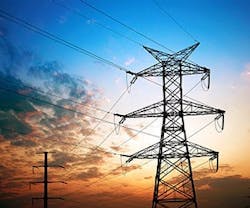Why Don't More Utilities Push Energy Efficiency?
Utilities in many states are rewarded for selling more energy, requiring reforms to incentivize energy efficiency, according to a new study from Oregon State University.
Recently published in Environmental Law, the study profiles key differences between how utilities address energy efficiency projects and renewable resources.
“We need to start addressing efficiency as we do renewable energy – by looking at it systematically and removing the barriers,” explains author Inara Scott, assistant professor at Oregon State and a former lawyer specializing in energy and regulatory law.
Four key recommendations could help make energy efficiency programs more attractive to utilities and ultimately benefit consumers:
1) Reorganize rate structures. Cost-recovery systems for many U.S. investor-owned utilities are based on an outdated model that ties higher returns for shareholders to producing more energy. Utilities with this model are then penalized for selling less energy if they encourage customers to adopt energy-efficient practices and products. To solve this problem, states can use ratemaking mechanisms to separate utility sales from revenues and establish performance incentives for efficiency programs.
2) Set targets and stick to them. Oregon aims to obtain 25% of its energy supply from renewables by 2025, a goal easily adopted by other states.
3) Streamline cost-effectiveness tests. This will be difficult, Scott cautions, because there is no one simple, accurate way to measure energy efficiency. “You’re trying to measure energy you didn’t use, so you’re measuring something that doesn’t exist,” Scott explains.
Some tests do exist, but they are so complicated that they can actually discourage utilities from building energy efficiency programs. However, Scott notes, conducting assessments on individual programs, streamlining test precision, and considering developing national standards will help.
4) Address market barriers. Colorado and Michigan are just two of the states that have increased the size of incentives for consumers to participate in energy efficiency programs – in some cases, participants are reimbursed for 100% of their investment. Better marketing efforts are needed to make customers more aware of incentives.
